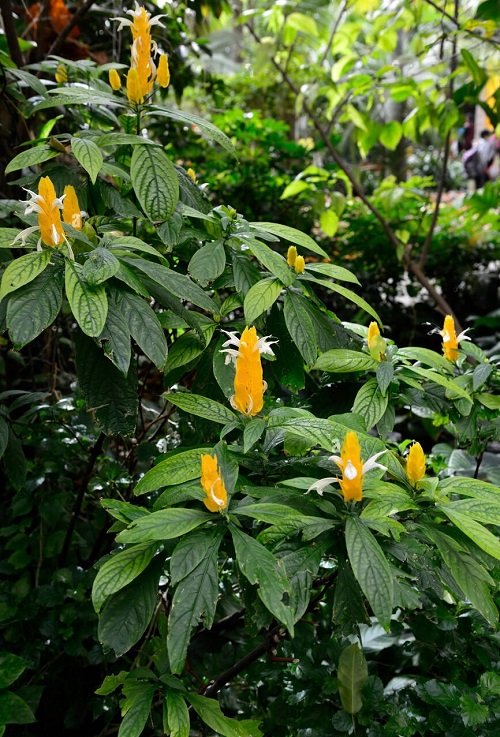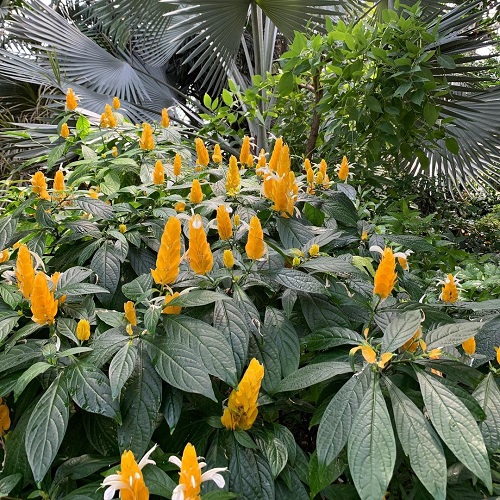Here is our How to Grow the Lollipop Plant guide – a delightful evergreen shrub to add a dash of vibrant yellow to your home.
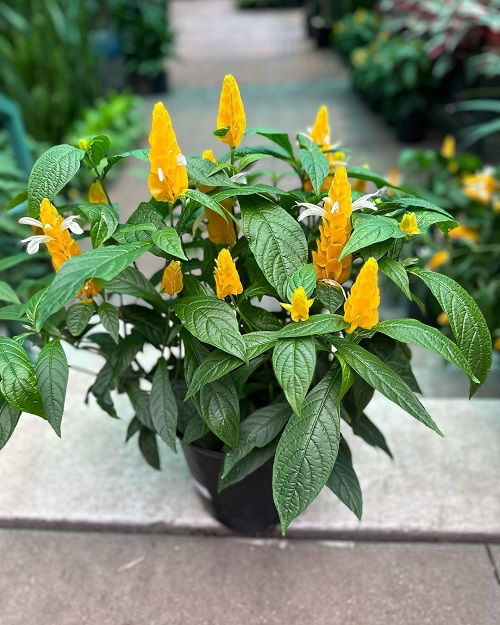
Learn How to Grow Lollipop Plant with this quick and easy guide. Unlock the secrets to successful growing, care, propagation, and essential tips.
Here is How to Grow River Tamarind
Lollipop Plant Information
The Lollipop Plant hails from the warm and tropical regions of Central and South America, making it a native gem of these lush areas. Belonging to the Acanthaceae family, this striking plant boasts an eye-catching appearance that captures the hearts of plant enthusiasts worldwide.
With its attractive lance-shaped leaves in deep green hues and vibrant yellow or gold bracts resembling lollipops, the plant stands out as a visual delight. Reaching a moderate height of around 3 to 6 feet, it adds a touch of elegance to both indoor and outdoor spaces.
What sets the Lollipop Plant apart is its ability to attract hummingbirds and butterflies. It has sweet nectar-filled bracts, making it a desirable addition to any wildlife-friendly garden.
Botanical Name: Pachystachys lutea
USDA Zones: 9-11
Other Names: Golden Shrimp Plant, Lollypop Plant, and Yellow Shrimp Plant
Here are the Most Beautiful Pink Tropical Plants
Propagating Lollipop Plant
The Lollipop Plant can be propagated through various methods, including stem cuttings, division, and seeds; however, the most successful and recommended way is through stem cuttings, as it ensures a higher chance of successful root development and faster growth.
- Select a healthy, mature Lollipop Plant to take stem cuttings from.
- Using sharp, clean pruning shears, take 4-6 inch stem cuttings from the tip of the plant, making sure to choose stems with no flowers or buds.
- Remove the lower leaves from the Lollipop Plant stem, leaving only a few leaves at the top to reduce moisture loss during propagation.
- Prepare a well-draining potting mix, such as a mix of perlite and peat moss, in small pots or trays.
- Make a hole in the potting mix using a pencil or finger and insert the cut end of the stem into the hole, ensuring it is buried about an inch deep.
- Gently press the soil around the stem to secure it in place.
- Water the cuttings thoroughly, allowing excess water to drain from the pots or trays.
- Place the pots or trays in a warm and bright location with indirect light. Mist the cuttings regularly to maintain humidity around them.
Within a few weeks to a couple of months, the cuttings should develop roots and show signs of new growth.
Propagate Any Plant Cutting Quickly Using this Trick
Best Pot for Growing Lollipop Plant
Opt for a pot with a diameter of about 6 to 8 inches – this will be good for a few years. After that, re-pot it to a one size bigger container, depending on the growth and spread. Ensure the pot has drainage holes at the bottom to prevent waterlogging and promote proper drainage.
Here are Plant Pot Sizes from Inches to Gallon
When to Plant Lollipop Plant
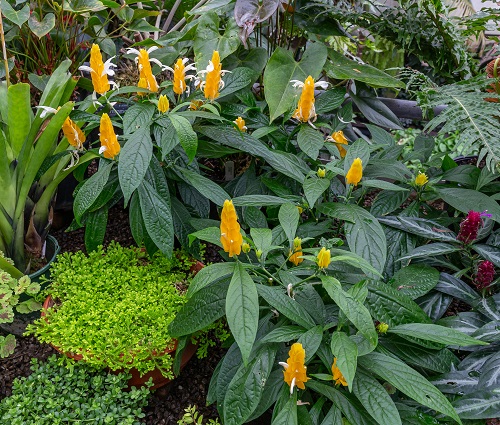
The best time to plant the Lollipop Plant is during the warm months of spring or early summer. Avoid planting during the colder months. The Lollipop plant prefers a tropical environment and may struggle to establish itself in colder temperatures.
Planting during this time will give it a head start, allowing it to acclimate and grow vigorously.
Here is What to Do in Garden in August
Growing Requirements for Lollipop Plant
Sunlight
Choose a bright location for your Lollipop Plant, where it can receive indirect sunlight. Avoid placing it in direct sunlight for extended periods, as it may scorch the leaves.
A spot near a north or east-facing window, or filtered sunlight from a sheer curtain, works well. If you grow it outdoors, find a spot with partial shade to protect it from harsh sunlight.
Soil
Use a well-draining potting mix for your Lollipop Plant. A mix of peat moss, perlite, and regular potting soil will provide the right balance of moisture retention and drainage.
Learn about Making Vinegar Fertilizer here
Ensure the soil is loose and not compacted, as it will help the plant’s roots breathe and grow freely.
Water
Keep the soil consistently moist but not waterlogged. Water the plant when the top inch of soil feels dry to the touch. During the warmer months, the Lollipop Plant may require more frequent watering, while in winter, it may need less.
Here are the best ways to water plants
Always check the soil’s moisture level before watering to avoid overwatering, which can lead to root rot.
Temperature and Humidity
The Lollipop Plant thrives in temperatures between 65°F to 75°F (18°C to 24°C). Avoid exposing it to temperatures below 60°F (15°C), as it can be sensitive to cold.
Maintain a moderate to high humidity level around the plant, ideally between 50% to 70%. You can increase humidity by misting the leaves regularly or placing a tray with water and pebbles near the plant.
Here are 10 Ways To Increase Humidity For Houseplants That Work
Lollipop Plant Care
Fertilizer
Feed your Lollipop Plant with a balanced liquid fertilizer every 2 to 4 weeks during its active growing season (spring and summer). Dilute the fertilizer to half or quarter strength to avoid overfertilization, which can harm the plant.
Learn How To Make Bone Meal Fertilizer At Home here
In the fall and winter, reduce or stop fertilizing, as the plant’s growth slows down during these seasons.
Pruning
Regular pruning is beneficial for the Lollipop Plant to maintain its shape and encourage bushier growth. Trim back leggy or straggly stems, and pinch off faded flowers to promote new growth and prolong blooming.
Pruning can be done throughout the year, but the best time is during the active growing season when the plant can recover quickly.
Pests and Diseases
Keep a watchful eye for common pests like aphids, spider mites, and whiteflies. If you notice any infestations, treat them promptly with neem oil or insecticidal soap, following the instructions on the product label. Also, ensure good air circulation around the plant to prevent humid conditions that can lead to fungal diseases.
Here are the Best Organic Pest Control Approaches Every Gardener Should Know
Avoid overwatering, as it can cause root rot. Regularly inspect your Lollipop Plant for any signs of pests or diseases, and take immediate action to protect its health and beauty.
Quick Tips to Grow Lollipop Plant
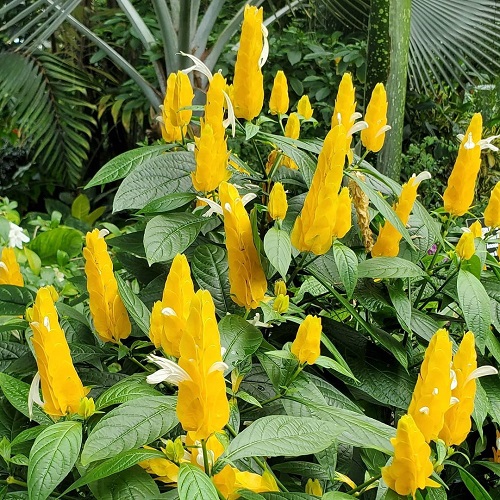
- While the Lollipop Plant enjoys bright, indirect sunlight, be mindful of direct sun exposure, which can scorch its delicate leaves.
- If grown indoors, choose a room with consistent temperatures and avoid placing the plant near heaters or air conditioning vents, as sudden temperature changes can stress the plant.
- Opt for a well-draining potting mix that includes peat moss, perlite, and regular potting soil. This blend allows for proper moisture retention and drainage, preventing root problems and promoting robust growth.
- Repot your Lollipop Plant when it becomes root-bound or outgrows its current container. Spring is an ideal time for repotting, as it allows the plant to adapt to its new environment during the active growing season.
- Water your Lollipop Plant from the base to prevent wetting the leaves, which could lead to fungal issues. Using a watering can or letting the plant absorb water through a saucer will minimize moisture on the foliage.
- Pair it with other compatible tropical plants to create a stunning and harmonious display. Plants like Calathea, Bird of Paradise, and Peace Lily make great companions for the Lollipop Plant.

